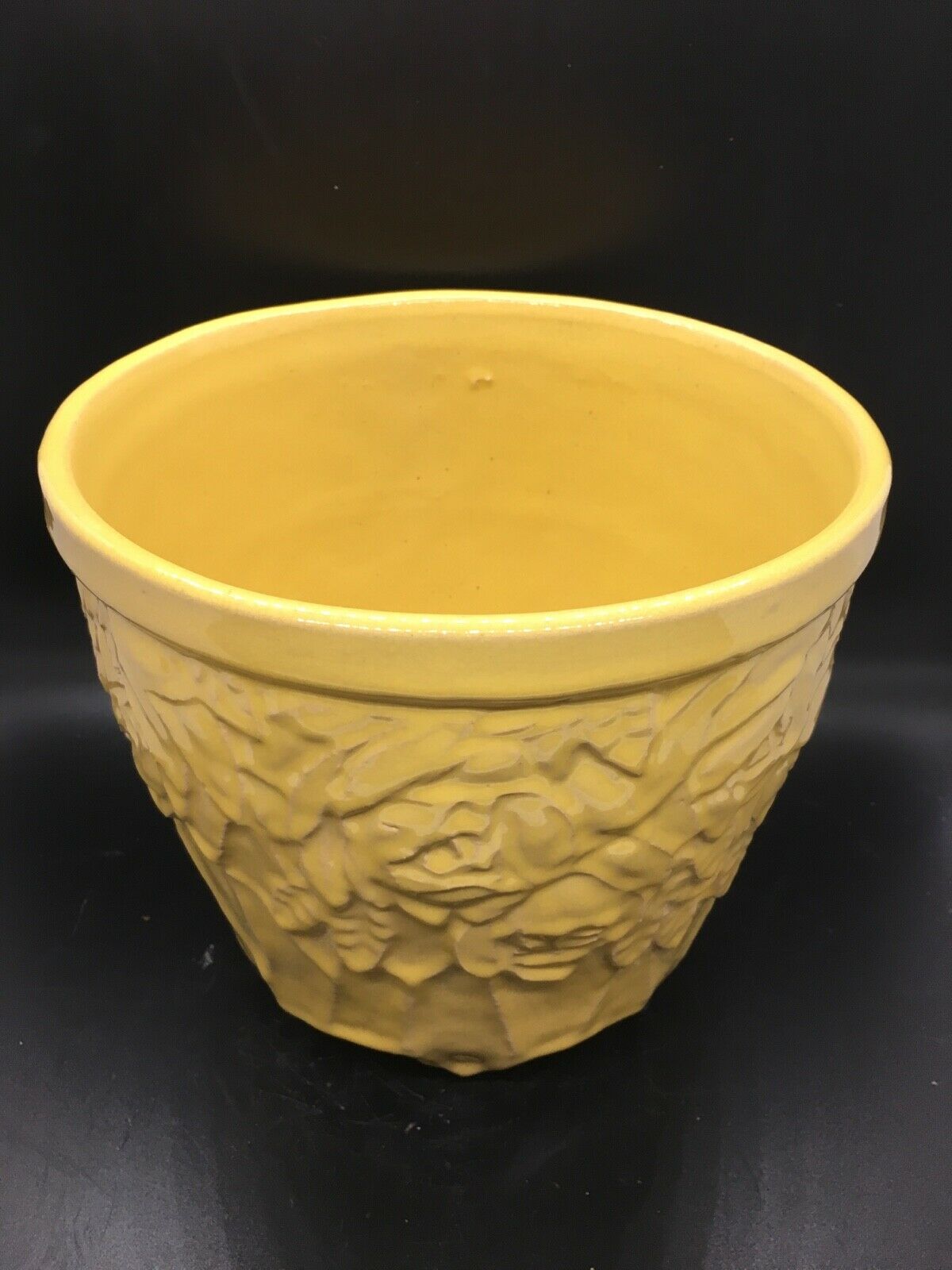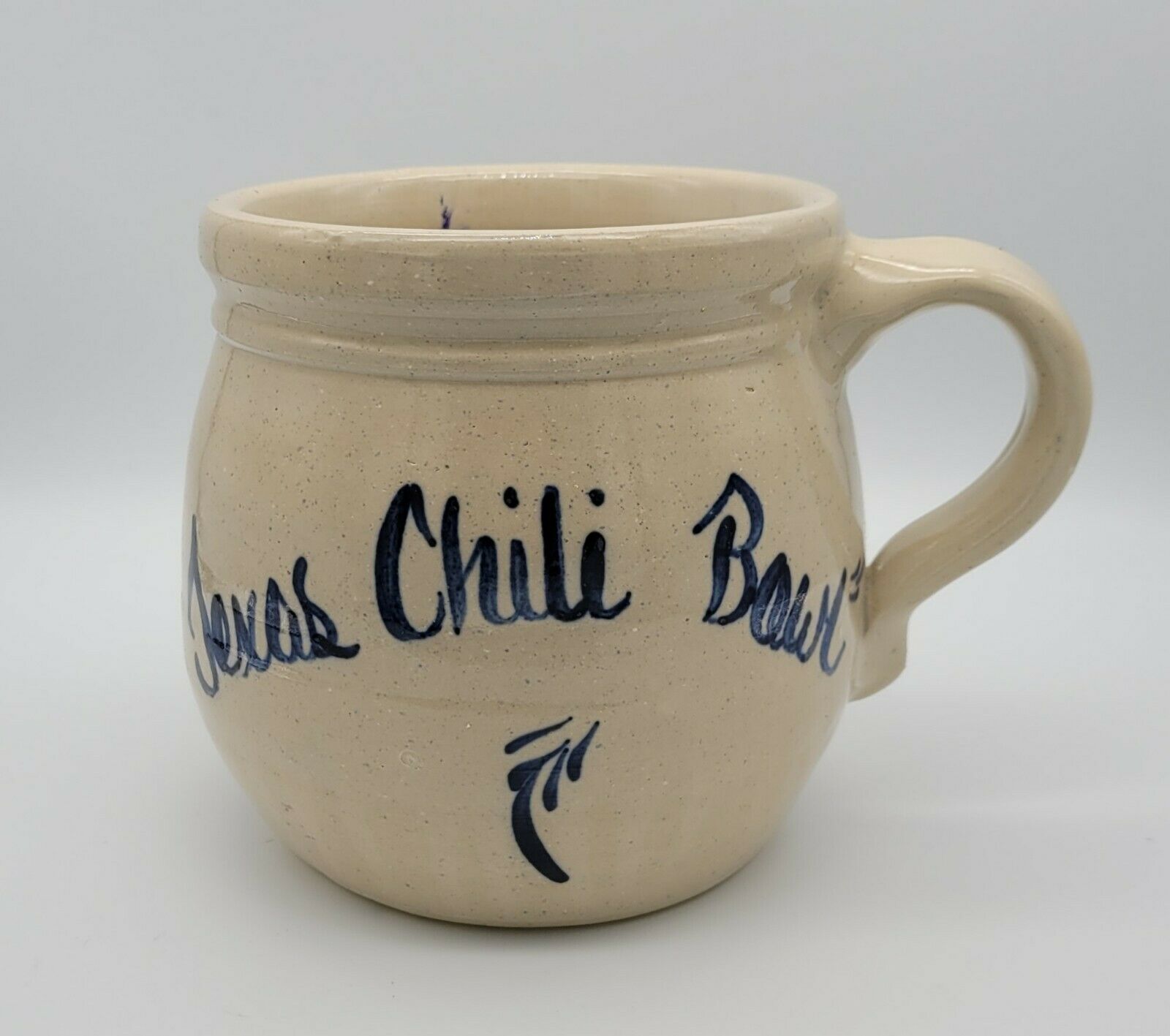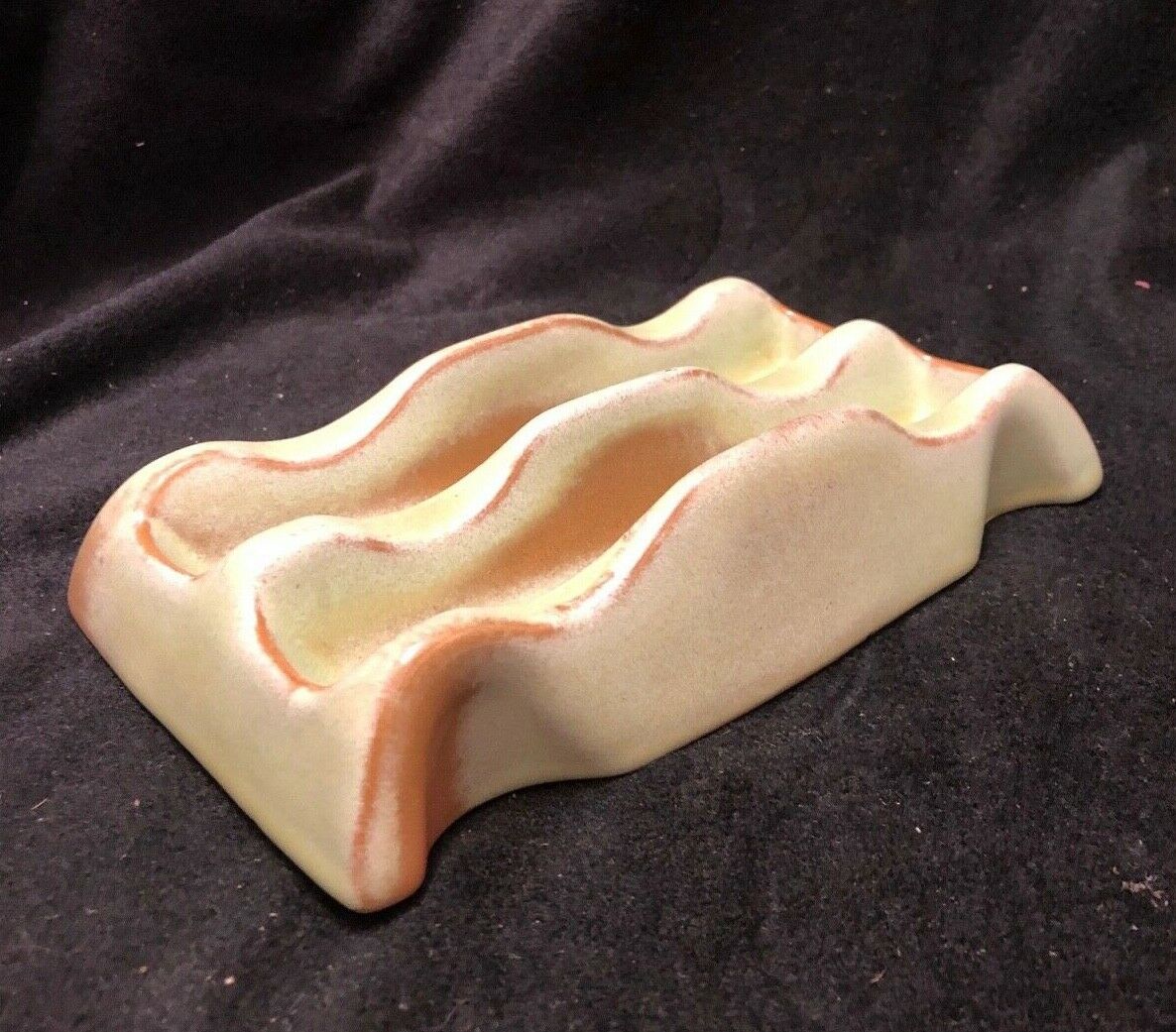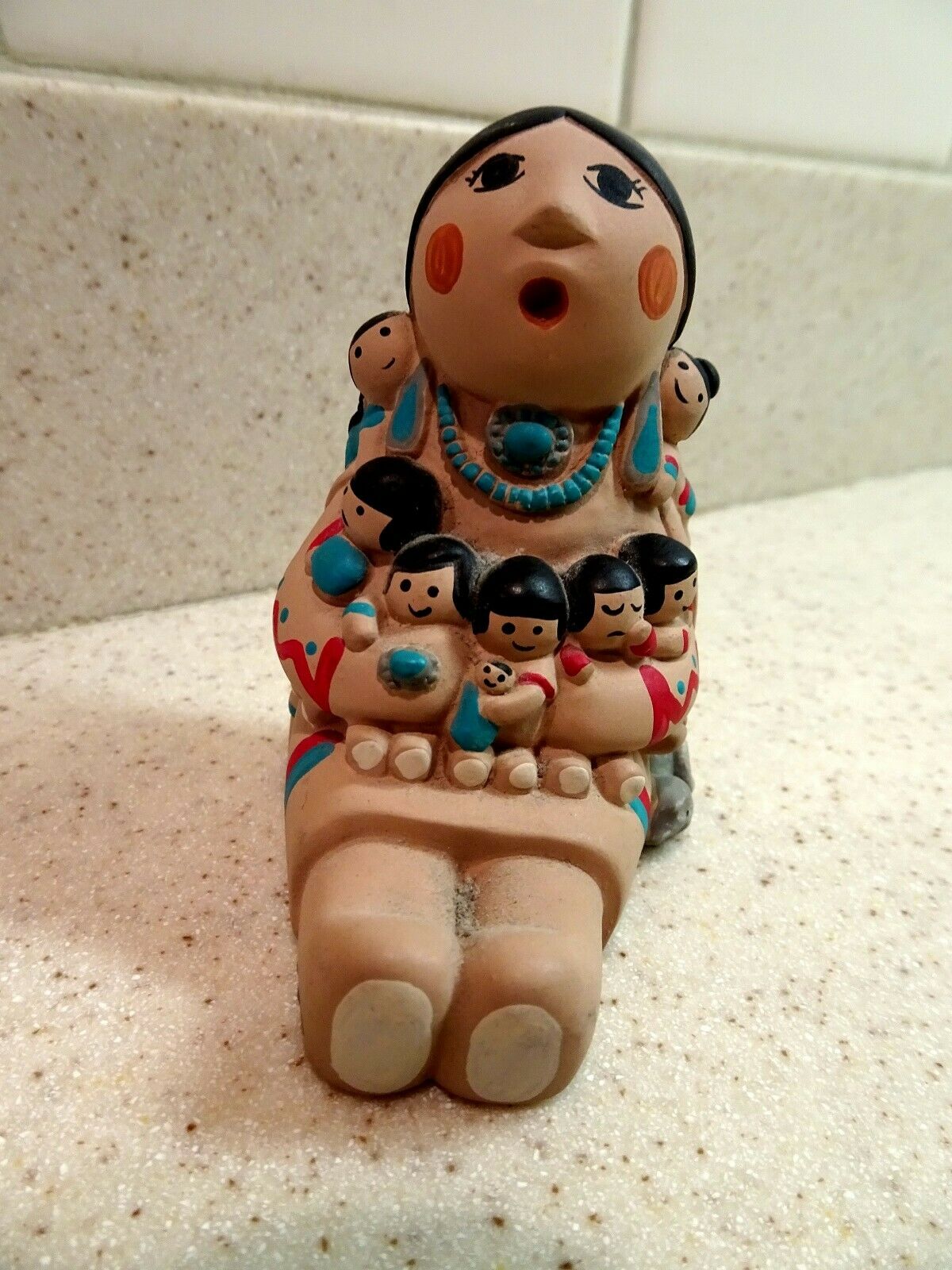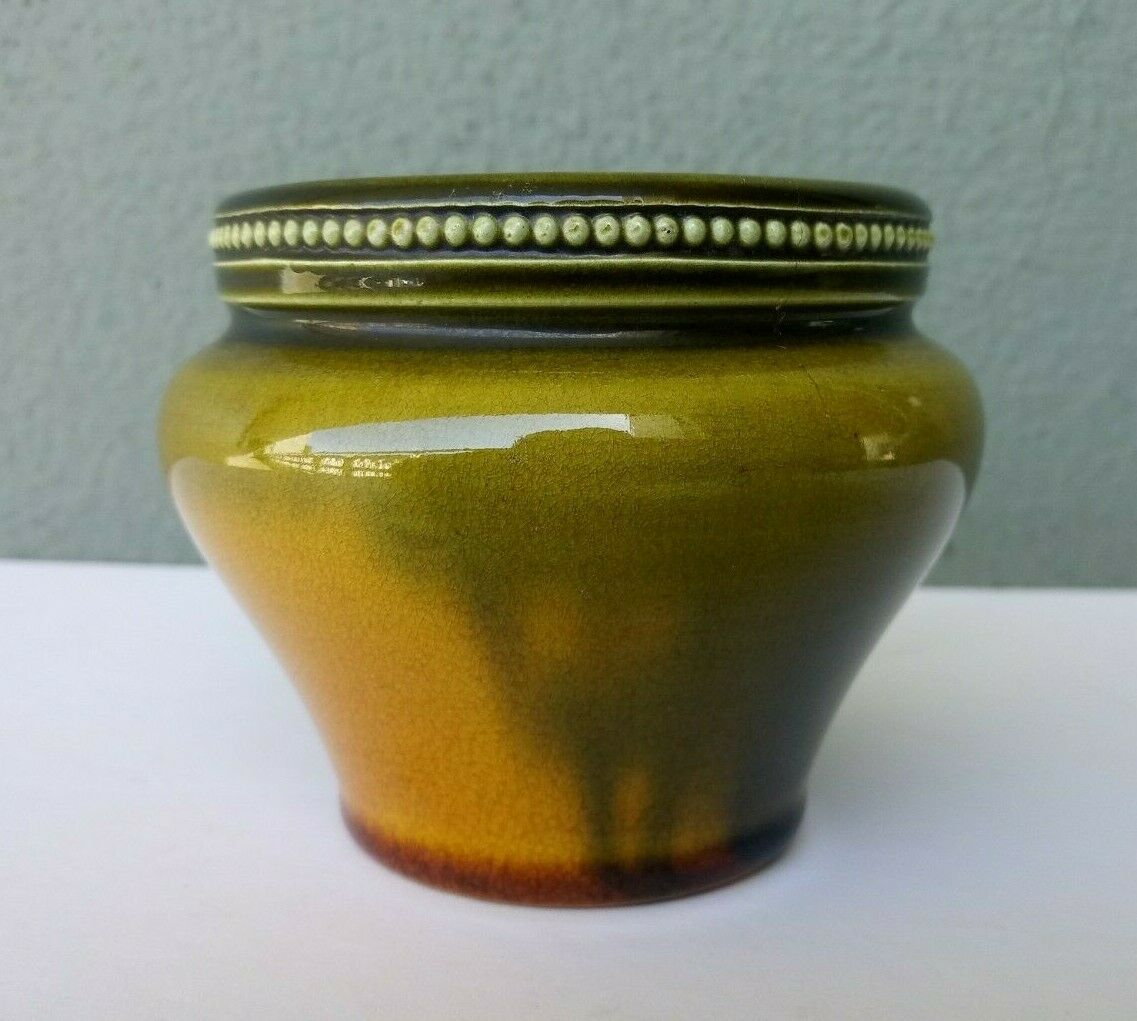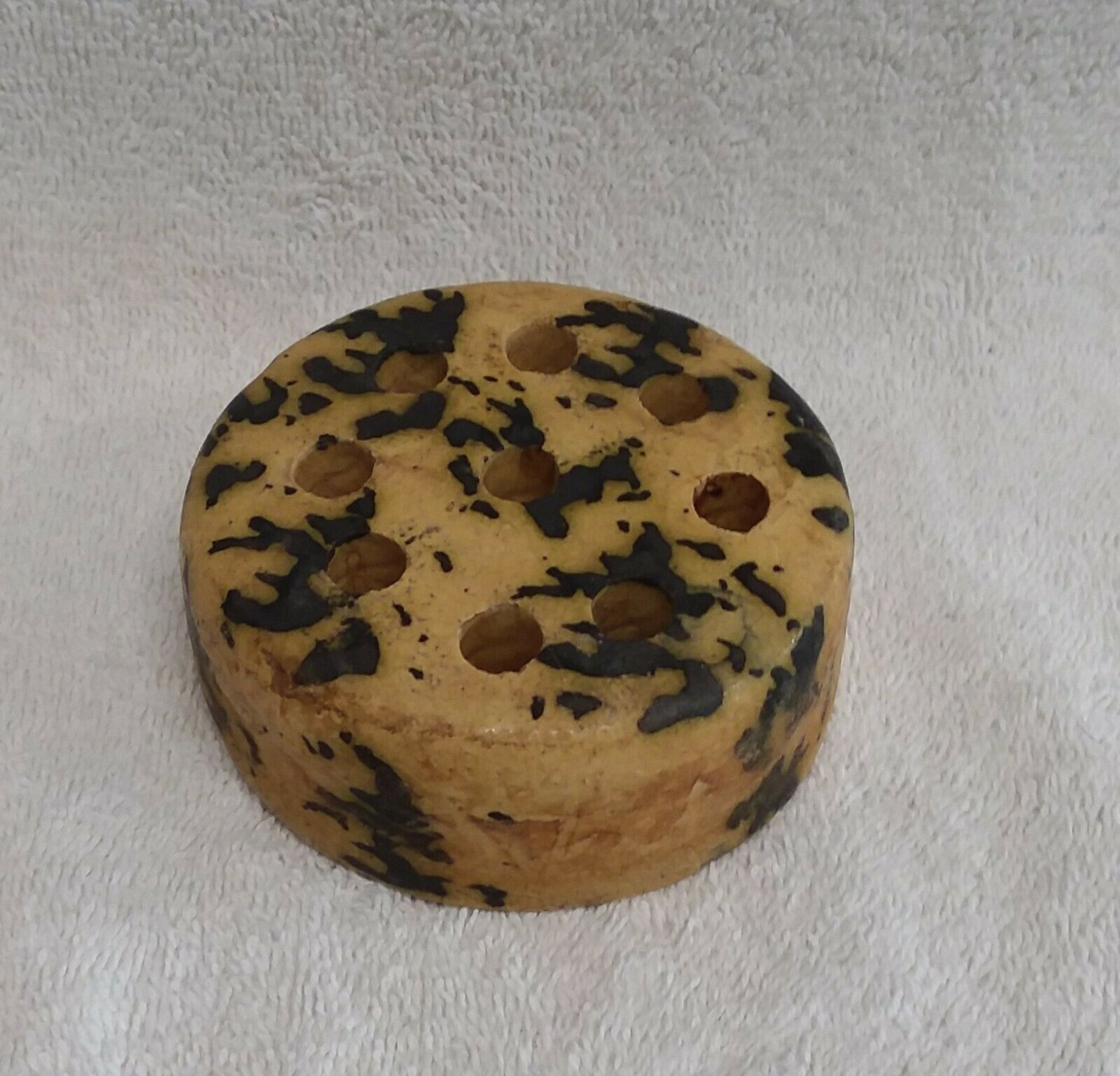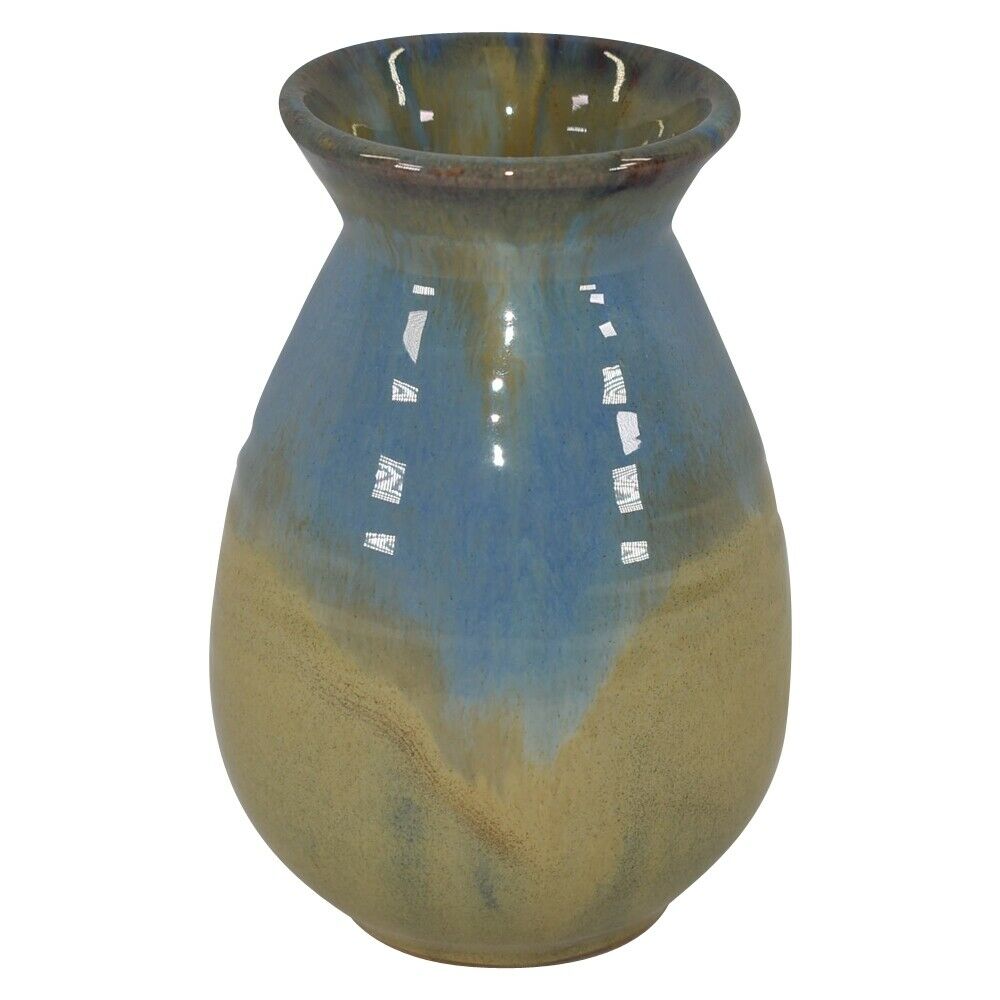-40%
Burley Winter Pottery Mottled Orange Green Geometric Design Jardiniere Planter
$ 105.07
- Description
- Size Guide
Description
Would prefer local pick up, but will ship. Unfortunately it weigh almost 12 pounds!Kept indoors, just outside for pics!
10” high
10” opening
13” widest point
Burley Winter Pottery Mottled Orange Green Geometric Design Jardiniere Planter.
A History of the Burley Winter Pottery
In Crooksville Ohio, in the year 1872, The Burley Winter Pottery Company was first established. The brainchild of William Newton Burley and Wilson Winter, they originally produced the most utilitarian of wares. They made the things farmers needed at the time, such as chicken feeders, pitchers and bowls, jugs, and crocks. In 1885 they took on a partner named 'Brown', and added his name to the company, but he reportedly left in 1892 and the company reverted to the previous name. The wares produced during this period are often called "Heart Brand" because they were impressed on the base with a 'BW' inside of a heart.
In 1932, Stoin M. Stoin was hired and began designing the first art pottery for the Burley Winter Company. He had previously created successful lines for both Weller & Niloak, and his work for Burley Winter would be no exception. The glazes were invariably matt, without even a hint of a sheen. The urns, jardinieres, oil and sand jars all appeared as if they had been found lying in a field with centuries of age from an ancient civilization. In fact, the shapes were nearly always striking in their simplicity and brutish look, as if formed by laborers in some antediluvian culture. The vases were thick and heavy, also implying some archaic design. Other popular products include Halloween Jack-O-Lanterns, cookie jars, and large bean pots.
The untrained eye might mistake Burley Winter pottery for early Brush McCoy or possibly even early Roseville, but the glaze is so unique that it cannot fool the practiced collector. The perfect mottling of colors in an unmistakable pattern almost demands you recognize the maker of these ancient looking wares. The purples and blues and greens all speak of something not of our age. The oranges and golds have a look of bronze patina and even rust, the pinks and greens suggest moss or algae accumulating over intervening centuries.
Collectors of Burley Winter often cannot explain their appeal. They have none of the refinement of other pottery of the time, but that was never the intent. Perfect in a garden, they look like they have been there for a century. In a cabinet, they look to be collected artifacts from a shipwreck, or rare pieces smuggled from the tomb of some pre-Columbian civilization lost to time. To the collector of Burley Winter pottery, they are exactly as they should be, with no apologies.
The company achieved its greatest commercial success in the 1930's, distributing across the country through a number of retail outlets such as Kresges department stores. Burley Winter pottery adorned gardens and estates from coast to coast, but its success was short-lived. Changing tastes in the buying public combined with the Great Depression brought art production almost to a standstill. Some time around 1943 all art pottery production ceased in favor of industrial products for the war effort. They continued in the later decades producing containers for chemicals, as well as other industrial clay products.
By 1988, even the sales of industrial clay products were not enough, and the company was put on the auction block. In 1997, the factory and the trademarks were bought by the Swingle family. Today, the 'The New Burley Winter Pottery' operates as a tourist destination, and reproduces some of the old pieces from the original molds. However, the new pieces are much lighter, and the glazes more contemporary. The new pieces are all marked 'New Burley Winter' in the base so as not to confuse them with the originals.
Today, Burley Winter is becoming quite respected in pottery collector circles. They have languished for decades in antique malls, the butt of a thousand jokes from so-called refined collectors. Now they are being snapped up with increasing regularity by a new generation of collectors who appreciate a hundred years hence the message from the artists who created them. They may not be for everyone, but for those who see the intent, they are perfect.






